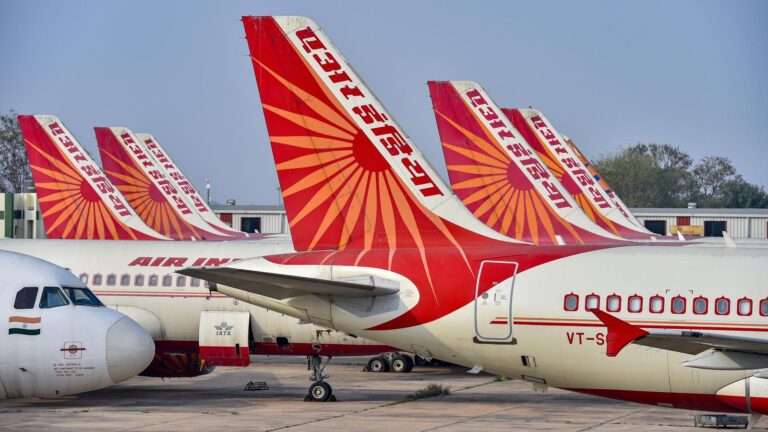In a decisive move aimed at tightening regulatory oversight, the Directorate General of Civil Aviation (DGCA) has ordered Air India to remove three of its officials amid ongoing investigations into compliance irregularities. The directive marks a significant escalation in the agency’s efforts to enforce aviation safety and operational standards within the country’s flagship carrier. This latest development has sparked widespread attention across the civil aviation sector, raising questions about regulatory accountability and the internal governance of India’s national airline.
DGCA Enforcement Actions Target Air India Officials Over Regulatory Breaches
The Directorate General of Civil Aviation (DGCA), India’s apex aviation regulatory body, has taken significant enforcement action against Air India by instructing the airline to remove three of its senior officials from their positions. The directive stems from serious regulatory breaches identified during recent audits and inspections, which reportedly included lapses in operational safety standards and failure to comply with mandatory reporting protocols. These violations have raised concerns over the airline’s adherence to established aviation norms and prompted swift intervention by the agency to reinforce discipline within the organisation.
The DGCA’s crackdown highlights the importance of strict compliance in the aviation sector. Key issues that contributed to the decision include:
- Negligence in safety compliance and maintenance schedules
- Inadequate documentation and failure in timely reporting of incidents
- Operational discrepancies during domestic flight audits
In a clear message to the industry, the DGCA has emphasized that systemic negligence will not be tolerated, urging all carriers to maintain stringent regulatory standards. Air India has announced its cooperation with the authority and intends to expedite internal reforms to restore regulatory confidence.
| Issue | Impact | DGCA Action |
|---|---|---|
| Safety compliance lapses | Risk to passenger safety | Removal of officials |
| Delay in incident reporting | Regulatory non-transparency | Audit and warnings |
| Maintenance schedule neglect | Potential for mechanical failures | Increased monitoring |
Implications of the Crackdown on Air India’s Operational Compliance and Safety Standards
The recent directive by the Directorate General of Civil Aviation (DGCA) to Air India to remove three key officials signals a significant push towards tightening operational compliance within the national carrier. This move emphasizes the regulator’s commitment to enforcing stringent safety and regulatory standards, ensuring that personnel responsible for critical oversight roles adhere strictly to prescribed guidelines. Non-compliance with such mandates can directly impact the airline’s ability to maintain flight clearances and operate without penalties, affecting its reputation both domestically and internationally.
Beyond personnel changes, the crackdown is likely to spur a comprehensive review of existing safety mechanisms at Air India. This includes a reassessment of:
- Training protocols for safety officers and ground staff
- Internal audit procedures to detect and resolve lapses swiftly
- Communication channels between operational teams and regulatory bodies
These efforts aim not only to avoid future regulatory actions but also to bolster public confidence in the airline’s commitment to safety. A comparison of compliance benchmarks before and after the DGCA’s intervention reveals the scope of necessary improvements:
| Compliance Aspect | Before DGCA Action | Post-Intervention Goal |
|---|---|---|
| Safety Audit Frequency | Bi-annual | Quarterly |
| Staff Training Updates | Annual | Bi-annual |
| Regulatory Reporting | Delayed in some instances | Strictly on-time |
Expert Recommendations for Airlines to Strengthen Governance and Avoid Regulatory Penalties
To prevent regulatory penalties and foster a culture of compliance, airlines must prioritize transparent governance frameworks and regularly update their operational protocols in alignment with DGCA guidelines. Emphasis should be placed on clear accountability channels where roles and responsibilities are explicitly defined for each official. Integrating robust internal audit mechanisms and real-time reporting tools can help identify discrepancies early and enable timely corrective actions. Airlines should also invest in continuous training programs focused on aviation regulations, ensuring that personnel across all levels are aware of their obligations and the consequences of lapses.
Experts suggest that collaborating closely with regulatory bodies and adopting a proactive compliance mindset can significantly reduce the risk of enforcement actions. Airlines can benefit from establishing dedicated compliance units tasked with monitoring evolving DGCA standards and facilitating swift responses. Furthermore, leveraging technology for data analytics in safety and regulatory compliance can optimize decision-making processes. The table below outlines key strategic focus areas recommended for airlines aiming to enhance governance and minimize regulatory risks:
| Strategy | Key Actions | Expected Outcome |
|---|---|---|
| Clear Accountability | Define roles; implement reporting hierarchy | Faster issue resolution |
| Regular Training | Compliance workshops; certification | Enhanced regulatory knowledge |
| Proactive Audits | Internal reviews; risk assessments | Early detection of non-compliance |
| Technology Adoption | Data analytics; automated reporting | Improved oversight and transparency |
To Wrap It Up
The Directorate General of Civil Aviation’s recent directive for Air India to remove three of its officials underscores the regulator’s intensified focus on maintaining stringent operational and safety standards within the country’s aviation sector. As investigations continue, this move sends a clear message to all carriers about the importance of compliance and accountability. Stakeholders and passengers alike will be watching closely as the situation unfolds, reflecting the broader efforts to strengthen governance in India’s rapidly expanding aviation industry.




